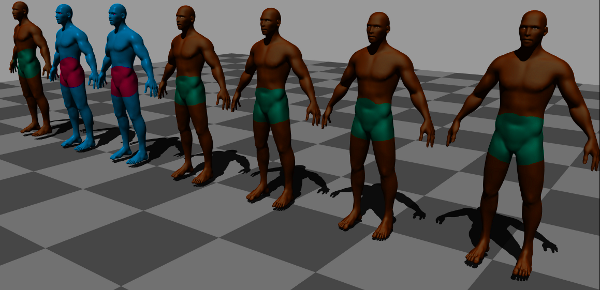BY LETTER
Slaria, Clan
Multi-dividual clade | |
 Image from Steve Bowers | |
| Clade Slaria clone-group including two (blue) synthetic human dividuals | |
Nearbaseline clone-culture clan from the Bolobo (HR 8323) system (originally known as Clan Solaria, but changed during the Version War when fighting the Solar Dominion.) The typical Slarian group consists of 4-12 cloned bodies, raised from birth together with infra-red and/or microwave broadband links between the minds of the dividuals. Because they share all their experiences for their entire life in real-time, they have a single consciousness when together, but function as (somewhat withdrawn) baseline humans when isolated. It is normal in conversation for a sentence to be started by one dividual and finished by another or several. Actions can also easily be coordinated between dividuals.
A fashion for integrating synthetic human (anvec) dividuals into the group mind started on Unity planetoid, Bolobo, increasing the physical and mental potential of each group. During childhood one or more of the clone dividuals is uploaded then copied into an anvec body. Because the group now includes copied dividuals as well as biological clones, some label them as copygroups (groups of copied persons who share technotelepathic links) although they are more accurately described as a clone/copy hybrid.
By tradition the human dividuals are pink or brown in colour, the anvec members blue. In mixed human/vec groups artificial hormones are used by the anvec dividuals to mimic the emotional response of the group as a whole. These artificial emotions can be adjusted at will and in some groups the anvecs deliberately amplify their emotional responses, increasing for instance the pseudo-adrenaline levels. This goes a long way towards explaining the well-known Slarian tendency towards volatile and outrageous behaviour and their reputation for aggression and bellicosity.
(See also Bolobo Wars).
Related Articles
Appears in Topics
Development Notes
Text by Steve Bowers
Initially published on 07 November 2002.
expanded February 2016
Initially published on 07 November 2002.
expanded February 2016






